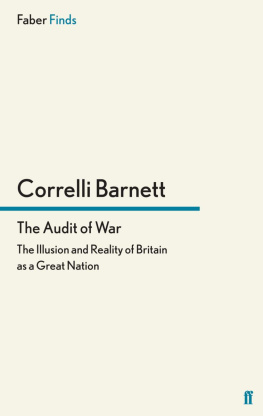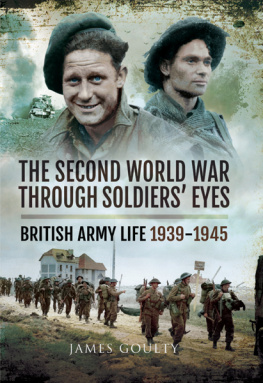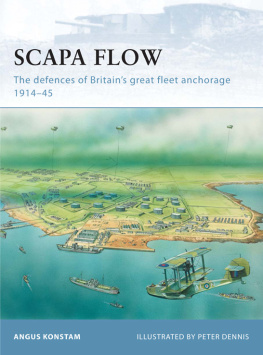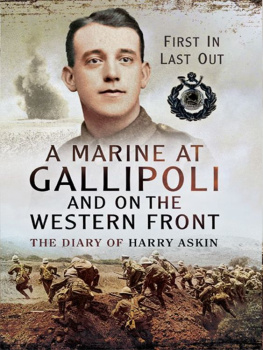I called upon the energy of the country to supply deficiencies in previous experience and preparation, and set to work to build a series of new armies, complete in all their branches (Kitchener, June 1916).
The original British Expeditionary Force (BEF) fought in the Retreat from Mons in 1914 and then at Ypres. Next came the New Army Kitcheners Army and the 141 days of the Somme battle. Last came the conscript army of 1918 with vastly increased firepower from fifteen rounds of rifle fire a minute (and no grenades) to a million shells a day.
The Army had shifted deployment in the ten years before the war from the empire to a possible war across the Channel. The effective reforms under War Secretary Edward Cardwell in 1870 had created a linked battalion system so that within each regiment one battalion served at home and one overseas. In practice the understrength home battalion was creating drafts for the priority battalion overseas and the fifteen-year postings of the Cardwell overseas battalions weakened the ties with their home area. Even as late as 1938 the 2nd Battalion Royal Welch Fusiliers (the regiment of Siegfried Sassoon and Robert Graves and in which my father served) was sent to Lucknow for a posting that was expected to last to 1953.
R.B. Haldane, the reforming war minister after 1906, sought a Hegelian army, named after the German philosopher Friedrich Hegel, seer of transformation, and transform he did. The British Army of 1910 was totally different from that of 1905. At its core was an expeditionary force of regulars, six divisions each of 12,000 men, which could be brought into line across the Channel in twenty days. For home defence against invasion there were the Territorials, potentially another fourteen divisions, but ones that required further training and armaments. There was one omission in the scheme a stockpile of rifles, guns and ammunition to bring about this expansion. The scheme created an army with many more men but with quite inadequate armaments, mainly because extra money had to be found for building dreadnought battleships. The Haldane reorganisation had to fund a large expansion with a static budget.

The War Office. A massive building and one of the first in London on concrete caissons.
With new organisation came some new men. Haldane brought in modernisers such as Haig, who were responsible for implementation. The one constant was the regimental system in fact the new organisation strengthened the local roots by basing the bulk of the army at home. Recruitment was voluntary and the new system provided greater opportunities. The reservation of certain jobs police and London taxi drivers for ex-servicemen also helped improve prospects for those who had finished their seven-year enlistment.
The new War Office was opened in 1906, across Whitehall from the Horse Guards, the old headquarters. The War Office was a massive trapezium resting on a concrete caisson base 6ft thick and 30ft below road level, in order to stop it from sinking into the Thames mud. The building had an ornately decorated hall with a grand staircase. Along the roof, sculpted figures symbolised peace and war, truth and justice, fame and victory, and on top of each of the four corner towers a decorative dome masked the irregularity of the buildings shape. The lion in the coat of arms over the main entrance has a distinctive snarl.

The Lion Rampant of the War Office.
The reforms in the ten years before 1914 included:
A new General Staff: there were some efficient heads of branches, even though the central leadership remained woefully inadequate until Field Marshal Sir William Robertson took over as Chief of the Imperial General Staff (CIGS) in 1915.
A new, clearly written operational guide: Field Service Regulations in two volumes.
A balloon corps and then from 1912 the Royal Flying Corps: both within the army. The Royal Air Force followed from 1 April 1918.
The use of heavy tractors for pulling artillery.
The use of telephones to transmit orders.
New emphasis on intensive training symbolised by training for fifteen aimed rounds a minute at Hythe Ranges. Soldiers had to pass this test or leave the army.
Large-scale divisional exercises on Salisbury Plain (newly leased for training) with air observation.
The reorganisation of the RAMC (Royal Army Medical Corps) to focus on prevention and sanitary measures as well as on treatment, following the success of the Japanese medical services in the Russo-Japanese War of 190405.
Military activity permeated society. The new Territorials were recruited in the towns, while the old Yeomanry cavalry had been based in the counties controlled by the Lords Lieutenants. The Boy Scouts, with their handsome uniforms, were founded by Boer War hero Baden Powell. The young Clement Attlee drilled the boys in the Haileybury Boys Club and gained early promotion in 1914 as a result. By 1914 half a million people were taking part in military activity, 300,000 in the Territorial Army.
From August 1914 Kitchener and the War Office drove through more changes, first with the New Army. Kitchener called for the first 100,000 volunteers. He was one of the few to see the need for an army of 2 million men, which would have to serve abroad in a long war. The Territorials were only pledged to serve at home and it is not clear whether they could have been expanded at the rate required.
Kitcheners call to arms was more than the one poster it was a sustained and powerful publicity campaign carried out by the relatively new method of street posters on hoardings. This media campaign used shame (what will your girl think of you?) as well as appeals to patriotism. Over the next two years there were 2 million volunteers. The new army was, however, trained by old officers. The dugouts who had been retired by the modernisers returned for a time.

Lord Roberts Christmas card 1913. There was a move towards greater military activity across society.

Lord Kitchener at the War Office, in his first days as War Minister, with Bobs your uncle Lord Roberts. From The Kitchener Memorial Book .

The Leeds Pals recruiting car Naw then, John Willis ger agate lad join tarmy on to Berlin.
There were great regional and local differences in recruitment rates. It was more of a tartan army than it statistically should have been; the recruitment rate was much higher in Scotland, and higher in urban than in rural areas.
Recruitment up to 4 November 1914 per 10,000 population:
Southern Scotland, 237
Midlands, 196
Lancashire, 178
London and the Home Counties, 170
Yorkshire and the North East, 150
Ireland (North and South), 127
West of England, 88
Eastern England, 80
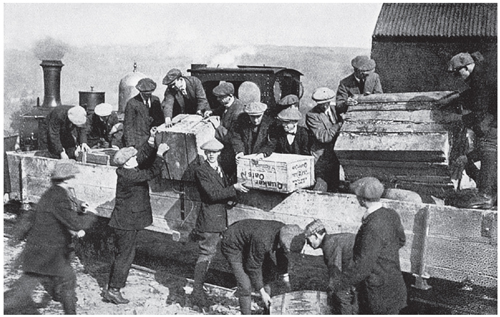
John gets to camp: advance party of the Leeds Pals unloading Quaker Oats at Colsterdale.





